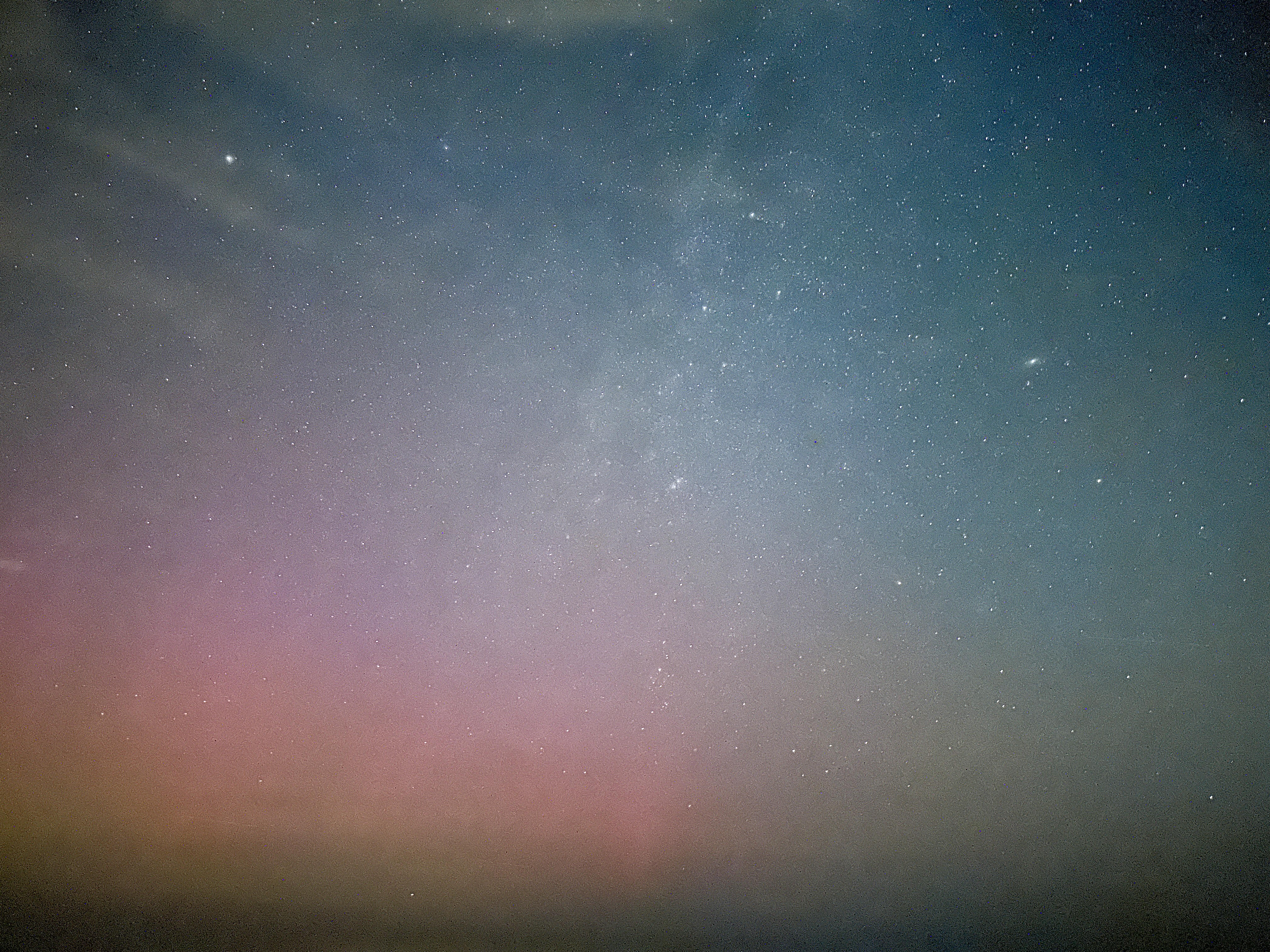Northern lights delight as 'cannibal' solar storm triggers auroras across US and Canada (photos)
There may be more chances to see the northern lights in the coming days as heightened geomagnetic activity is expected to continue through Aug. 1.
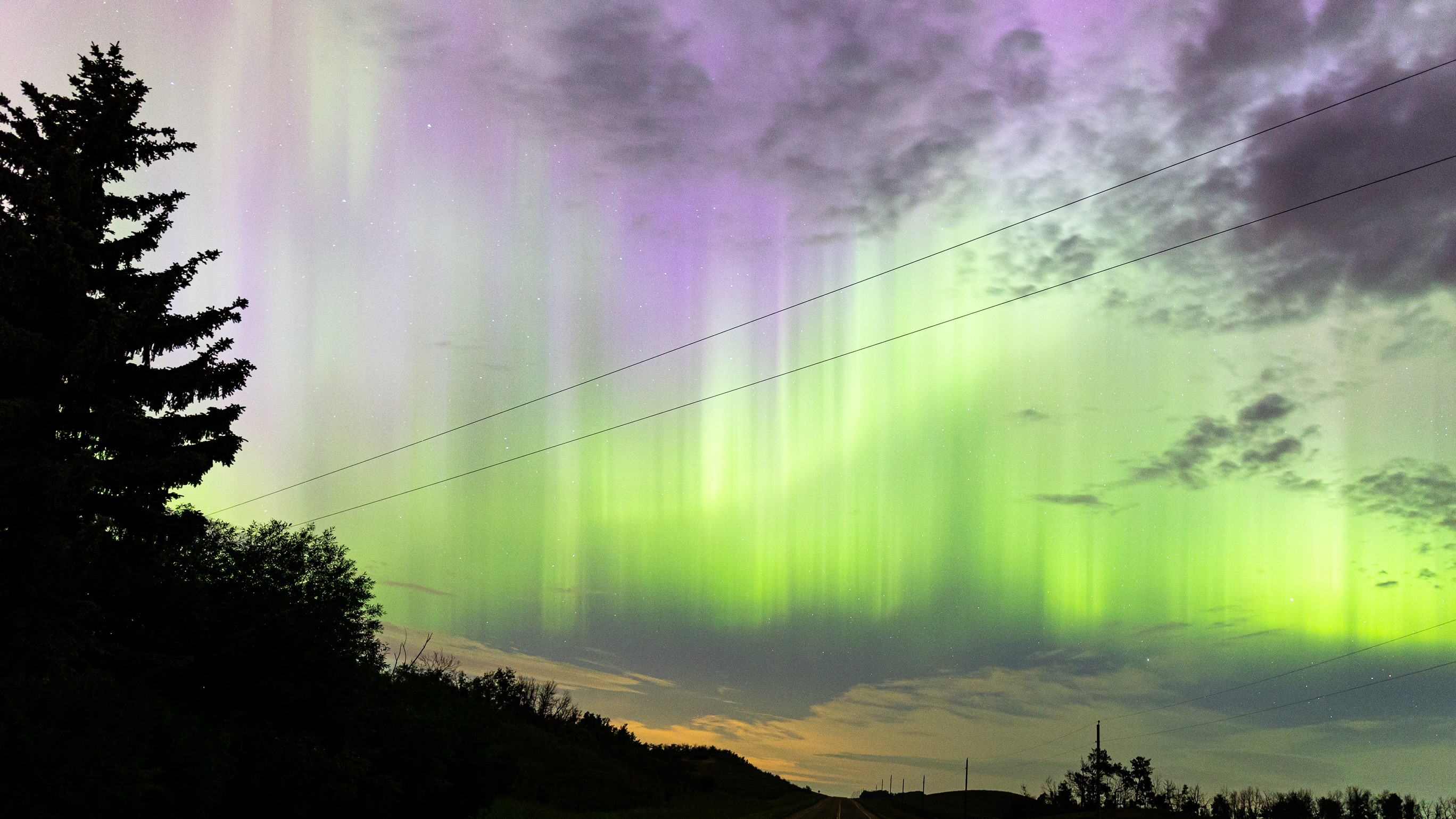
Over two days the sun launched a barrage of coronal mass ejections (CMEs) — expulsions of plasma and magnetic field — toward Earth.
The first two CMEs combined and formed a "cannibal CME" which hit on July 29 at 8:27 p.m. EDT (0027 on July 30), sparking a minor G1-class geomagnetic storm and triggering northern lights across the U.S. and Canada.
Forecasters had originally predicted a more potent G3-class geomagnetic storm from the cannibal CME, but the magnetic fields inside the CME were pointing in the wrong direction and therefore didn't connect with Earth's magnetosphere. Nevertheless, avid aurora chasers and skywatchers were able to set their sights on the skies and capture some beautiful northern lights photos as the colors danced overhead.
With so much solar activity, predicting the arrival of so many solar storms and their effectiveness at triggering vivid auroral displays proved to be quite the headache for solar weather forecasters.
Space weather physicist Tamitha Skov took to X to try and describe the difficulty forecasters were having.
"This shows what a mess #SpaceWeather forecasters are going through trying to model this extensive train of storms," Skov wrote in a post on X.
From Mild to Wild: In the last two days our Sun has launched at least TEN #solarstorms that are Earth-directed (or partly so). This shows what a mess #SpaceWeather forecasters are going through trying to model this extensive train of storms. Of course, my colleagues may argue… pic.twitter.com/rWGp8c1pFQJuly 29, 2024
From the video in the embedded X post, you can see 10 CMEs erupting from the sun in all directions.
Breaking space news, the latest updates on rocket launches, skywatching events and more!
The good news is more CMEs are on their way which could spark G2-class geomagnetic storms when they arrive on July 31 and Aug. 1, according to SpaceWeather.com. So we could be in for even more northern lights shows over the next couple of nights.
Northern lights photos
Photographer Sarah Marie Calhoun watched the northern lights dance outside Evergreen Colorado, U.S.
"I am always excited at a chance to catch the northern lights," Calhoun told Space.com in an email.
At first, Marie wasn't too sure there would be much to see but to her delight, the auroras but on a colorful show.
"As things started last night, I thought maybe we wouldn’t have too much luck, then around midnight things started to explode with color! Always such a treat to capture an event like this, and I try pushing the bar to see it at lower KP levels than previously known in Colorado," Calhoun continued.
Will McQuillan captured this beautiful photograph of the northern lights over Lake Ontario, near, Baker, New York, U.S. on July 30.
"Hazy conditions on the horizon didn’t seem to stop much of the aurora's deep reds and light pinks from dancing under the Milky Way," McQuillan told Space.com in an email.
Theresa Tanner saw a vibrant display above central Alberta, Canada after midnight local time on July 30 along with partner Dar Tanner
"It was partly cloudy so we didn't think we would get a break but we did!" Tanner told Space.com in an email.
"The sky exploded around midnight colors were amazing!" Tanner continued.
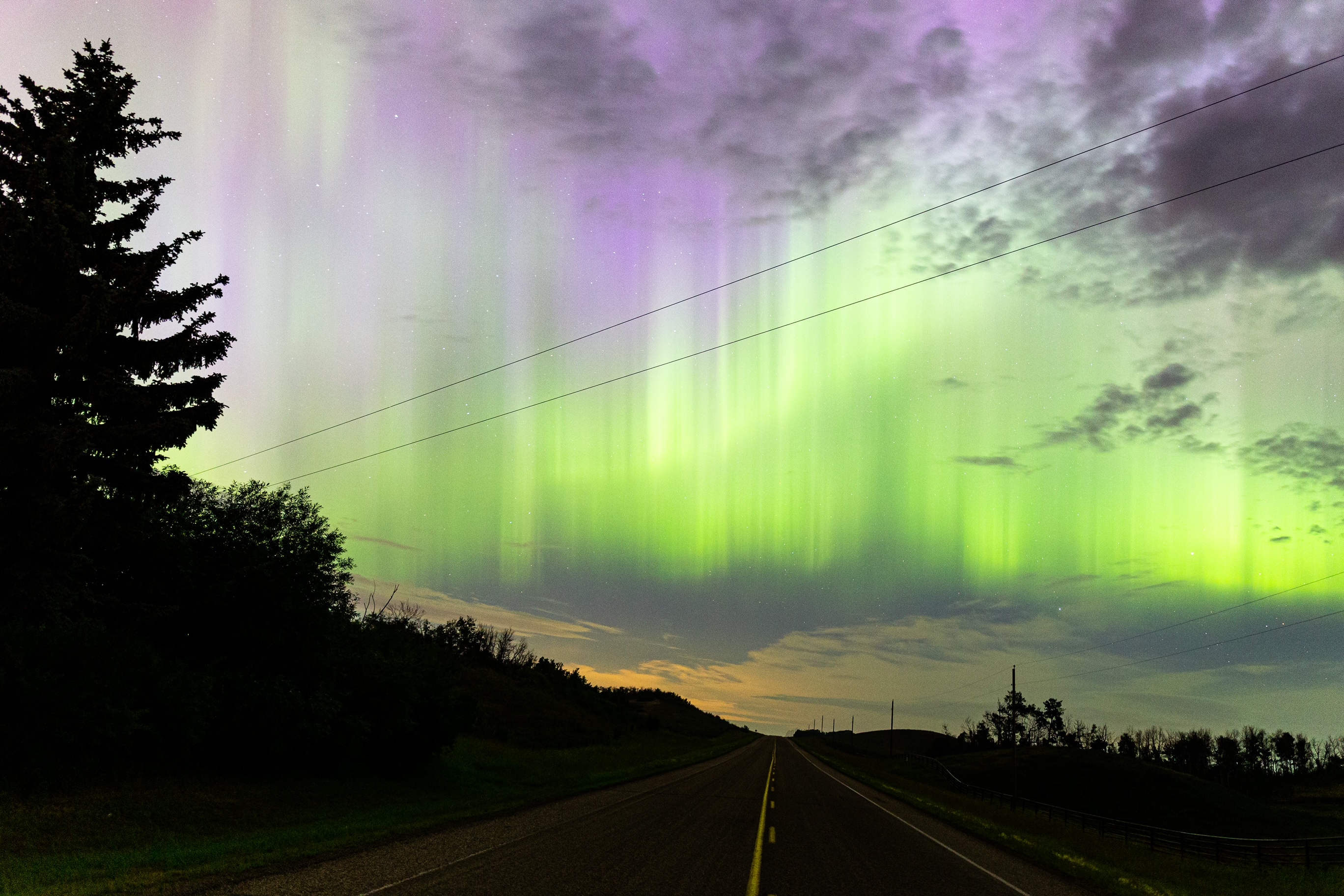


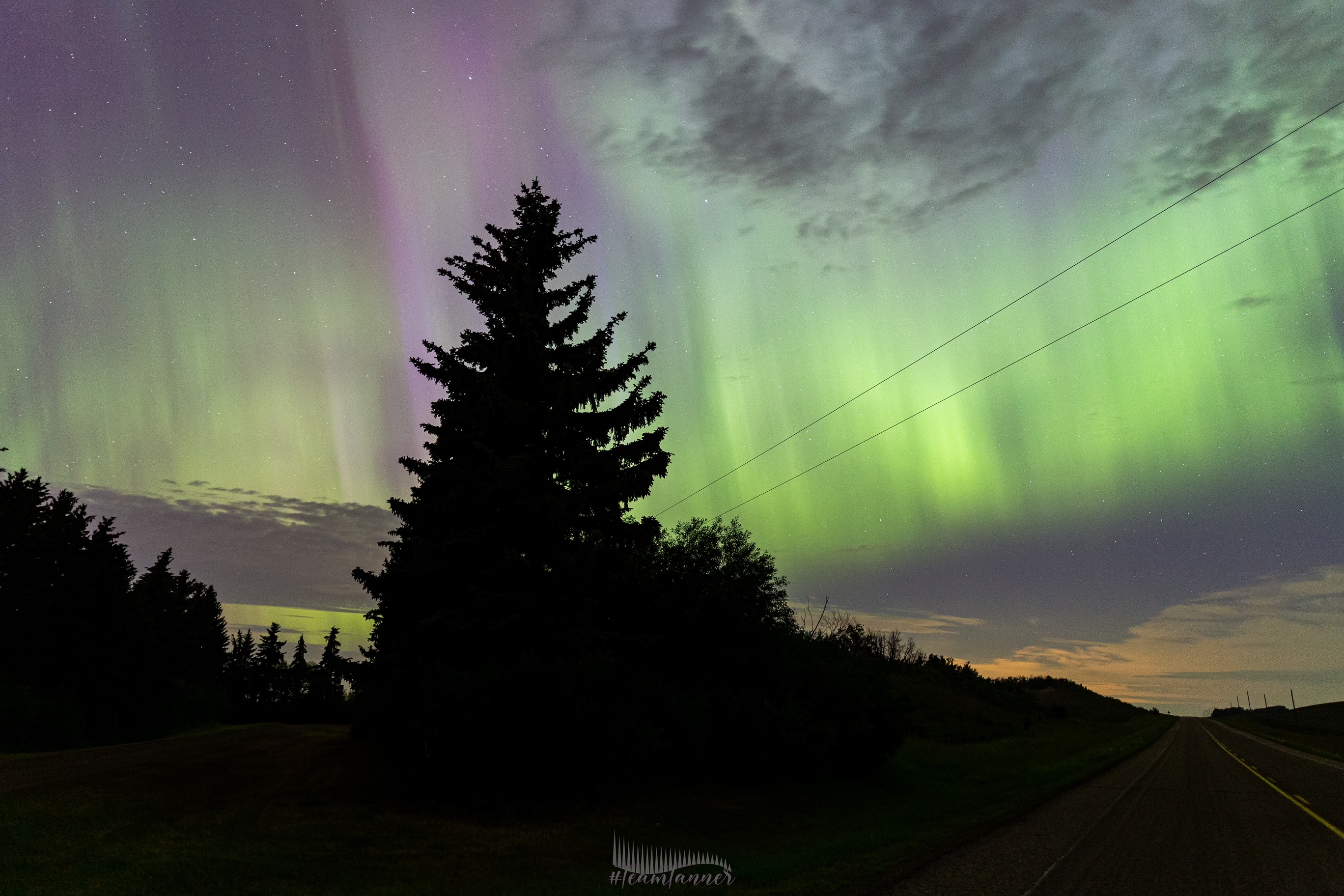
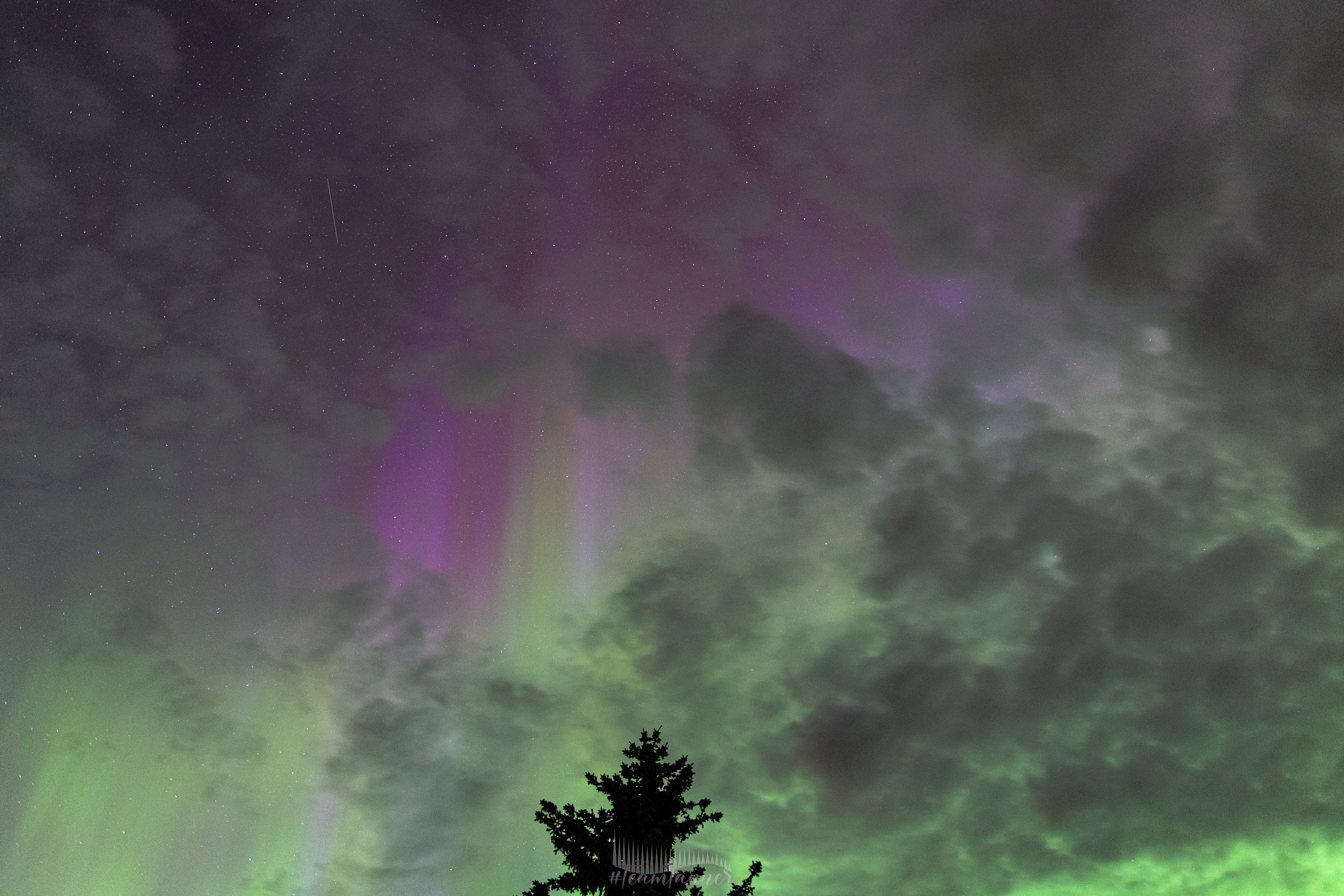
Earth and space science communicator SunshineNate captured this stunning aurora image during a STEM livestream on TikTok. At the time, the livestream was showing viewers how to photograph auroras with a smartphone. They captured this striking image using an iPhone 14 Pro.
"Western Pennsylvania had a very subtle yet colorful aurora display during the G3 Geomagnetic Storm," SunshineNate told space.com in an email.
Photographer Harlan Thomas captured this dramatic image on July 30 at 2:58 a.m. MST (4:58 a.m. EDT) 18 miles (30 kilometers) north of Calgary, Canada. The scene shows a green aurora display dancing overhead while a meteor streaks through the star-studded sky.
"Conditions were cloudy with the occasional opening and there was wildfire smoke from fires burning in BC and Alberta," Thomas told Space.com in an email.
"It's always nice to follow a CME from the Sun to Earth, the results can be spectacular," Thomas continued.
Brandon Caza enjoyed the northern lights display from his deck in Saskatoon, Saskatchewan, Canada around 12:30 to 1 am local time.
"Lady Aurora is out and dancing this evening!" Caza wrote in a post on X.
When he's not on the hunt for auroras, Caza enjoys storm chasing with The Eh! Team.
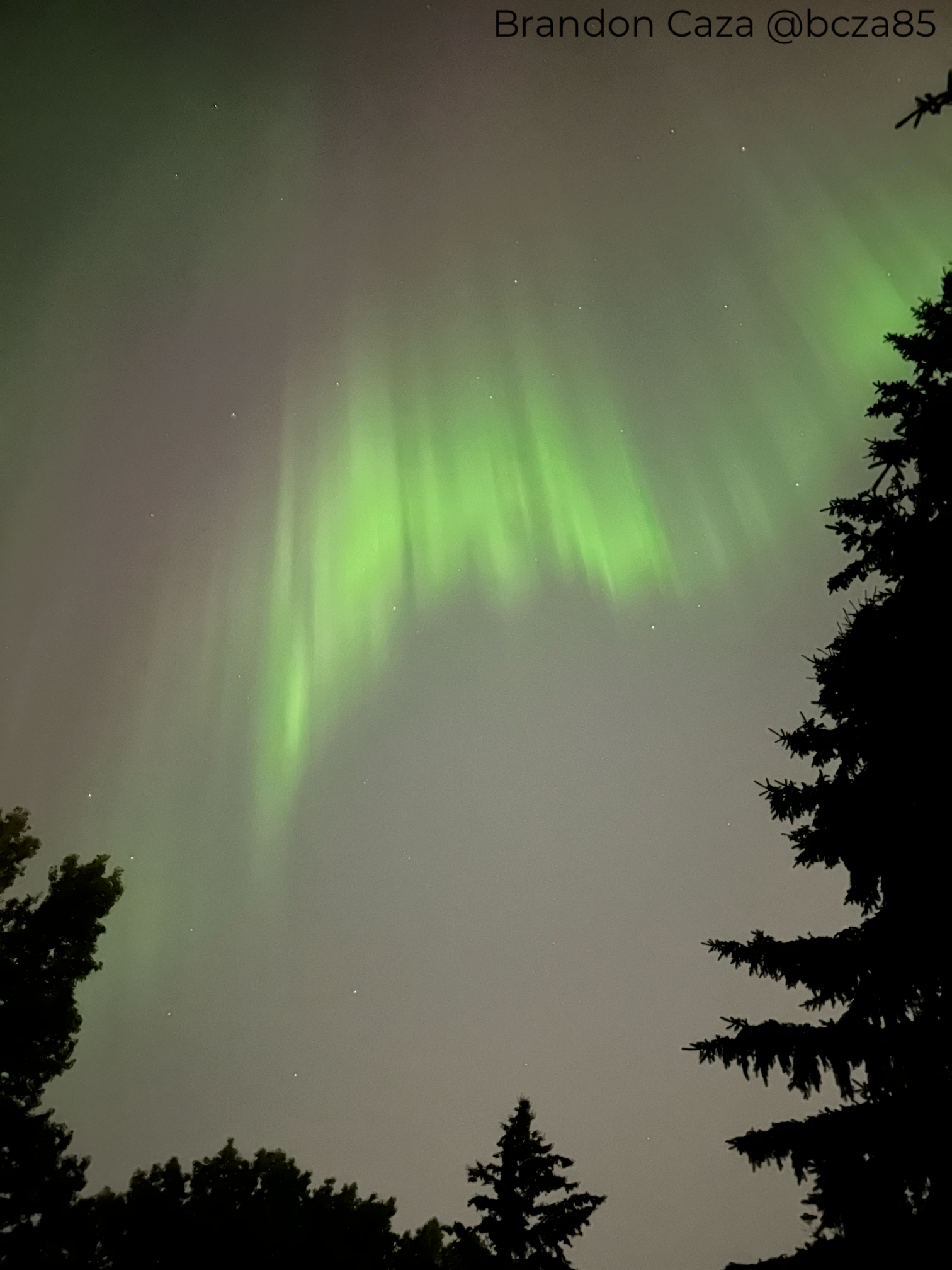
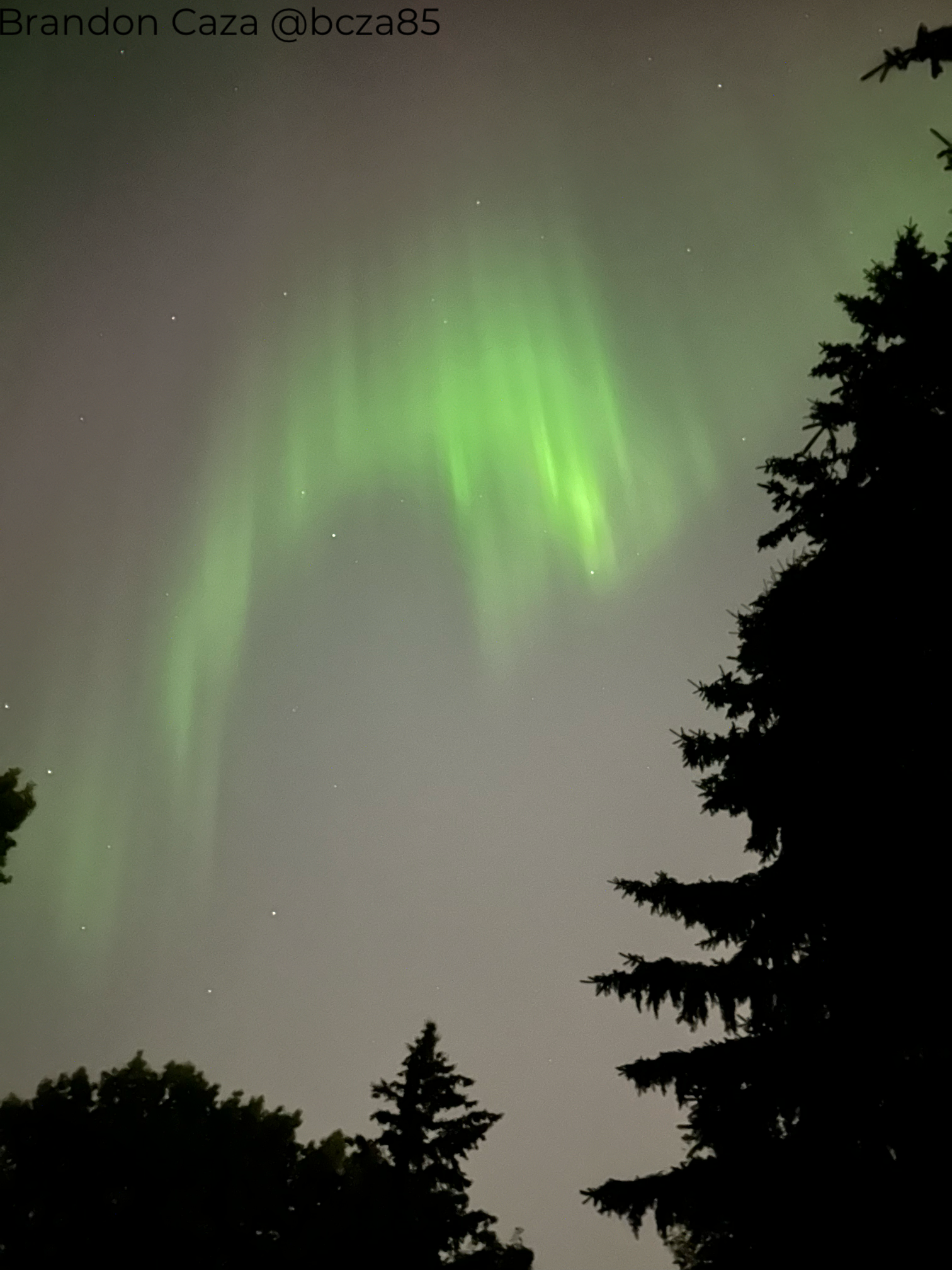

Many skywatchers also took to X to post their impressive aurora photos from the minor geomagnetic storm.
Photographer Steve Luther captured a vibrant purple display near Wasco, Oregon, U.S.
It took a while but #Aurora finally appeared in northcentral #Oregon over the harvested wheat fields near Wasco 4:15 am PDT. Pre-dawn Auroras are some of my faves, crescent moon up also. #northernlights #Auroraborealis @TamithaSkov @AuroraNotify @spacewxwatch @spaceyliz @NWSSWPC pic.twitter.com/uK0gcpP7GwJuly 30, 2024
Photographer Kris Luckenbach witnessed a remarkable northern lights display above Kodiak Island, Alaska, U.S.
Finally!!! Aurora in July in Alaska!!📍 Kodiak, Island 7/30/2024 2:30-3:30am@AuroraNotify pic.twitter.com/ZUuxI1yL0QJuly 30, 2024
And Justin Anderson captured an explosive aurora display above northern Manitoba, Canada.
WOW!!! An absolute incredible night in Northern Manitoba tonight!Be sure to check our IG stories for updates when our trip is over. @Vincent_Ledvina @TamithaSkov @TweetAurora pic.twitter.com/ovFnaILE6zJuly 30, 2024
Editor's note: If you capture a stunning photo or video of the northern lights (or southern lights!) and want to share them with Space.com for a possible story, send images, comments on the view and your location, as well as use permissions to spacephotos@space.com.

Daisy Dobrijevic joined Space.com in February 2022 having previously worked for our sister publication All About Space magazine as a staff writer. Before joining us, Daisy completed an editorial internship with the BBC Sky at Night Magazine and worked at the National Space Centre in Leicester, U.K., where she enjoyed communicating space science to the public. In 2021, Daisy completed a PhD in plant physiology and also holds a Master's in Environmental Science, she is currently based in Nottingham, U.K. Daisy is passionate about all things space, with a penchant for solar activity and space weather. She has a strong interest in astrotourism and loves nothing more than a good northern lights chase!

